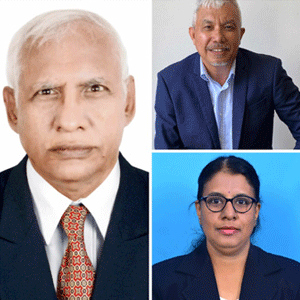
Our planet today faces major environmental challenges of our time. Clean water is scarce today, and the urbanized and industrial world faces severe water stress. Recycling of waste water plays a critical role in averting water crisis and the wastewater treatment industry plays a pivotal role in managing the water resources, and addressing the growing concerns of water scarcity and pollution. In April 2019, the National Green Tribunal laid down stringent discharge standards for Effluent Discharge Standards and further called for the adoption and integration of new technologies in the country with low life cycle cost.
This shift has fueled the rise of Praalter bringing their rich expertise in the advanced technologies of Electrocoagulation (ECR) and Silicon Carbide (SiC) membrane filtration, as readily available to the Indian Market. The firm provides comprehensive solutions for ‘any hard-to-treat water and wastewater’ across a wide range of industries, including municipal, oil & gas, pharmaceuticals, textiles, tanneries, paper and pulp, MSW leachate, chemical manufacturing and many more.
Maximizing Efficiency
“Our ECR operates in flow through process, handling larger volumes of waste¬water. The system’s flexibility is a major advantage, offering different configurations, and versatile, customizable operating parameters, to suit various water types, whether low or high conductivity. The system uses less or no chemicals, and produces less non-hazardous sludge which passes TCLP tests”, speaks Shubha Rao, Technical Director, Praalter. The firm’s ECR technology bears the Solar Impulse Foundation Label as an efficient sustainable and economically viable solution.
There are over 200 plants across the world using its ECR equipment. The SiC is a robust ceramic ultrafiltration system that achieves high recovery of up to 95 percent, chemically inert, high-temperature endurance, minimal or no chemical utilization, long service life, small footprint, less energy consumption, and easy maintenance. Both technologies can be completely automated.
Praalter specializes in cutting-edge wastewater treatment technologies designed to deliver exceptional value. By minimizing operational expenses (OPEX) and promoting a circular economy through resource recovery, the firm provides a sustainable approach to wastewater management. Addition¬ally, inherent disinfection capabilities and simple operation make the compa¬ny’s technologies a reliable and efficient choice for diverse applications.
“We offer comprehensive end-to-end solutions for the entire water spectrum, aligning with Sustainable Development Goal (SDG) 6, which focuses on clean water and sanitation. Each solution is customized based on specific wastewater characteristics, ensuring optimal performance”, adds N. Santhanam, Managing Director, Praalter.
Praalter leads the way in providing advanced, revolutionizing and cutting-edge technologies for a sustainable tomorrow
Data-Driven Approach
The company follows a data-driven approach to its water & wastewater treatment solutions meticulously. The initial step is a comprehensive analysis of the effluent, where historical data, including peak, low, and average values, are reviewed. It ensures that the design is robust and can handle any extreme conditions. While this process is time-consuming, it is essential for precision. The next step involves assessing the treatability of the effluent in the firm’s lab models, determining the potential treatment efficiency and providing clients with an estimated CAPEX and OPEX. For existing systems, adequacy studies are conducted, and the treatment process is re-engineered to maximize the use of current infrastructure, reducing the need for additional investment.
“Our extensive experience in the O&G sector is in the APAC and NA regions. We have treated drilling waste, produced water for discharge and recycling standards, and with BTEX treatment. Our clients include ExxonMobil, CHEVRON, PERTAMINA, PETRO-CHINA, and WEXPRO, USA. In the Paper & Pulp industry, proof for point-of-generation effluent treatment exists with minimal pre-treatment and 100 percent recycling. AOX is a crucial parameter that is treated.
In Tanneries’ CETP, Sulphides, Hexavalent Chromium, TSS, Color, and COD are treated very efficiently. In the textile sector, we have vast experience in the APAC region and have shown that by integrating ECR and SiC UF in an existing treatment facility, we can nearly double the treatment volume”, signs off Theron Madhavan, Technology Consultant, Praalter.
We use cookies to ensure you get the best experience on our website. Read more...